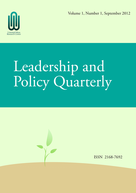


Volume 11 Issues 1-4 (2022-12-31)
Volume 10 Issues 1-4 (2021-12-31)
Volume 9 Issues 1-3 (2020-09-30)
Volume 8 Issues 3&4 (2019-12-31)
Volume 7 Issues 1&2 (2018-06-30)
Volume 6 Issues 3&4 (2017-12-31)
Volume 6 Issues 1&2 (2017-06-30)
Volume 5 Issues 3&4 (2016-12-31)
Volume 5 Issues 1&2 (2016-06-30)
Volume 4 Issues 3&4 (2015-12-31)
This qualitative study investigated Chinese private higher education (PHE) institutional leaders’ perceptions of the challenges they face, the coping strategies they use, and the opportunities for the quality improvement of their institutions. Semi-structured interviews were conducted between the principal researcher and the institutional leaders from 13 PHE institutions in central China. They reported that their institution experience the following four major challenges: a) fund shortage and overindebtedness; b) market forecast errors; c) leadership inefficiency; and d) student management problems. For each of the four challenges they have developed corresponding coping strategies. Further, the government, the market, as well as the institutions have created these institutions opportunities for their quality improvement.
The transformation and upgrade of the manufacturing industry is an inevitable trend of the new economy era. The development of the skilled personnel decides whether the transformation and upgrade will realize its target or not. The development of the skilled personnel is affected by multiple factors such as its development policies, administrative policies, the stock and flow of the human resources, the developer and the developed. What factors are the primary? What factors are the secondary? How about their weights and correlations? The existent literature hasn’t discussed all these issues systematically and quantitatively. Using structure equation modeling (SEM) approach, this study built a SEM of the factors affecting the dynamic matching between the development of the skilled personnel and the transformation and upgrade of the manufacturing industry. Policy implications for the development of the skilled personnel are suggested.